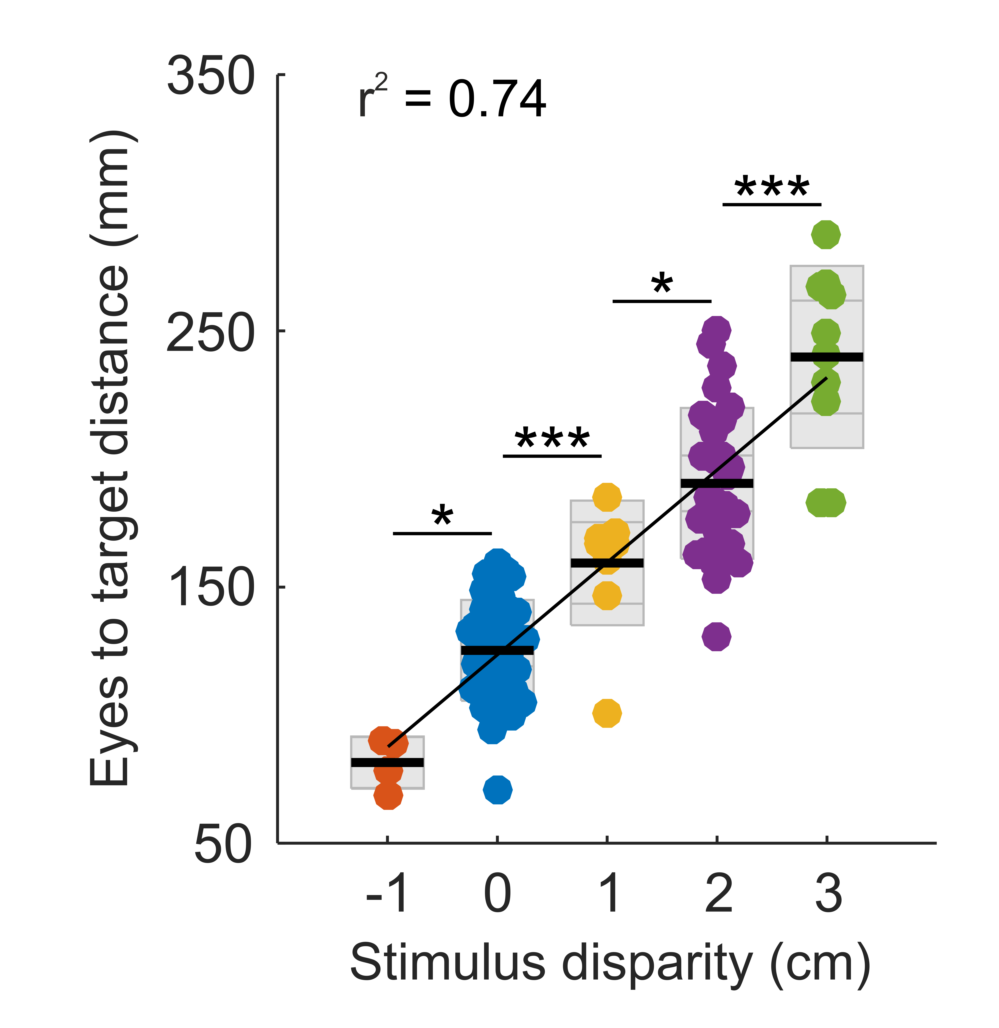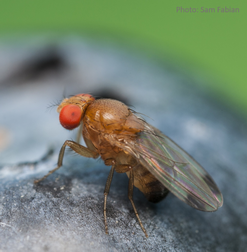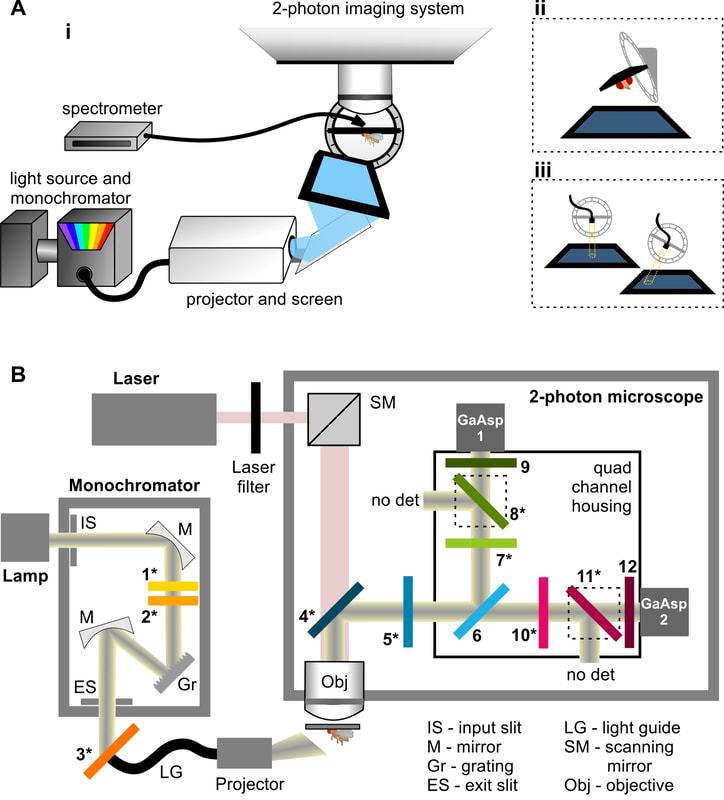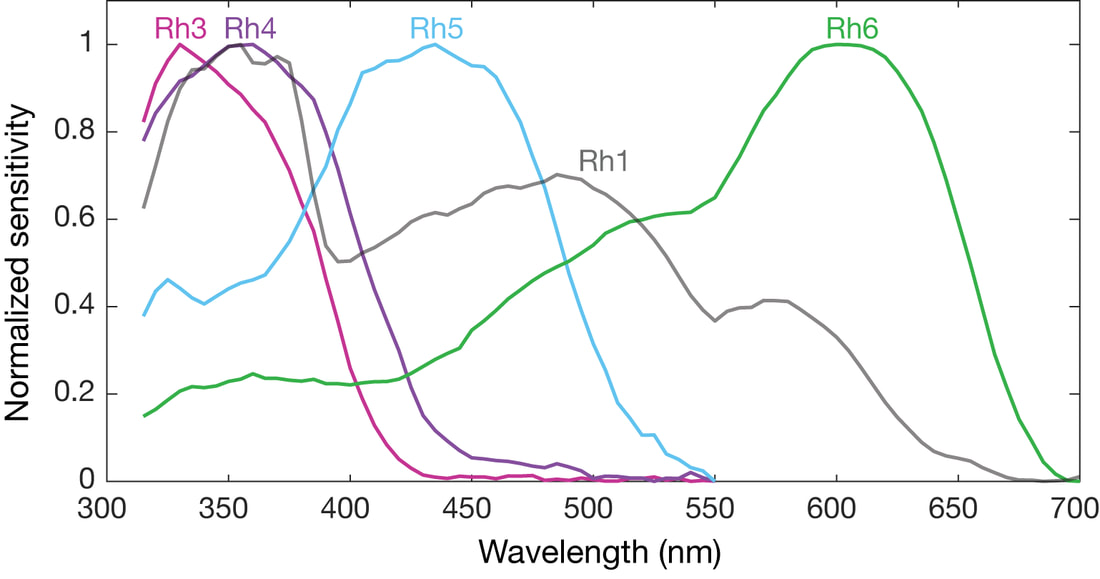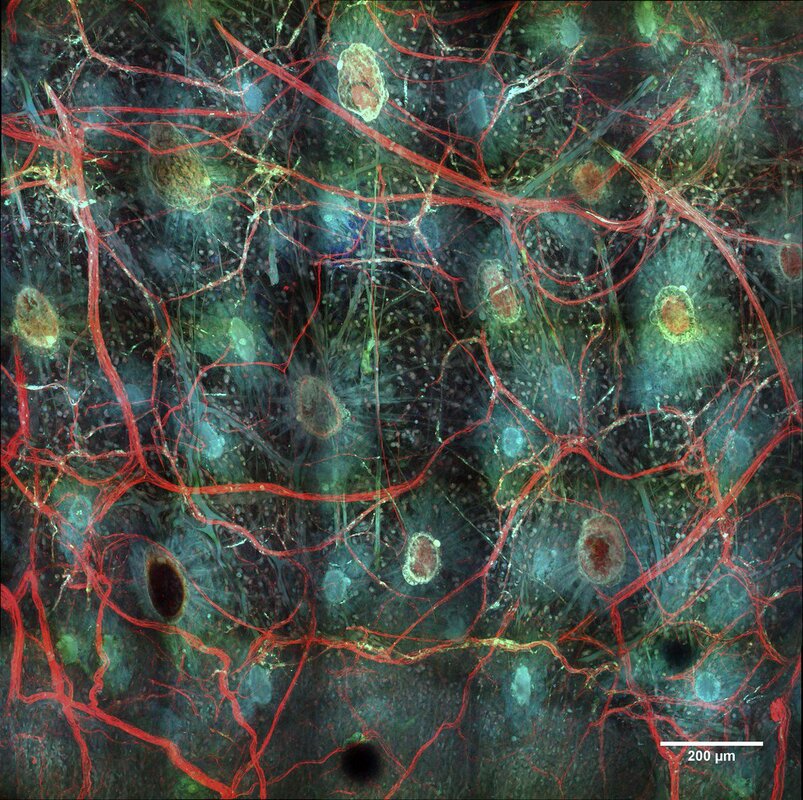We investigate information processing during visually guided behaviors in invertebrate species. The Wardill Lab studies how relevant information is extracted from visual scenes and used for appropriate behaviour. For example, what are the general principles that neurons use for extracting motion, colour, shape and polarization? What is the neural basis for depth perception, prey capture, arm control and dynamic skin signaling in cephalopods? The lab uses advanced methods in genetics, 2-photon imaging and behavioral quantification and are seeking interest from PhD students.
|
|
How is cuttlefish stereovision so sophisticated?Cuttlefish are visually guided predators. They are stimulated by motion to seek out and capture prey. They are known to rotate their eyes forward to better resolve potential targets. Once prey are selected, they then need move into the right position prior to launching a ballistic attack with their tentacles that have suckers on their tips, known as clubs. The suckers help secure the prey so they can retrieve it back to their eight arms which further help secure and then devour their prey. Previously, it was shown that cuttlefish with only one function eye (i.e. monocular vision) were still able to launch their tentacles and capture prey at the correct distance. How was this possible? Could they learn distance monocularly or did they have another mechanism?
We sought to discover if cuttlefish had stereovision and if so what would be the purpose of this adaptation. Stereovision is the comparison of signals from the left and right eye to calculate a difference, or disparity, so that the animal can determine the distance to objects in view. Thus to test for stereopsis in cuttlefish we built an underwater 3D cinema and fitted cuttlefish with colored glasses (red and blue, or green and blue) to see how they would respond to virtual targets that popped out of the screen. We found that cuttlefish indeed could calculate disparity in our 3D cinema assay as they would move their bodies to different positions from the screen, prior to striking, as we changed the spacing between the stimuli delivered to the left and right eye. This confirmed that cuttlefish do have stereovision, and calculate it in a similar way to humans and other vertebrate visual predators. By testing animals with monocular and binocular types of stimuli in our cinema we determined that stereovision allowed the animals to strike sooner and travel shorter distances prior to ballistically attacking their prey. This helps explain the function of evolving stereovision as quicker prey capture means that the prey is less likely to escape but also there is less time that the cuttlefish is exposed to predators before returning to its camouflage state. An unexpected finding was that cuttlefish rotate their eyes independently, like chameleons, which seems at odds for an animal that must compare signals from their left and right eye to determine the precise location of their prey. How do their brains do this? This is the subject of our ongoing research. |
How do insects extract visual information that is important for behaviors?We use the model animal, Drosophila melanogaster to identify visual processing strategies and then apply the knowledge gained (from genetic, physiology and behavioral experiments) to locate analogous mechanisms in other fly species, such as Spotted Wing Drosophila (Drosophila suzukii) and Killer flies (Coenosia attenuata). Taking this comparative approach allows us to reveal general principles of circuit function.
We published our new method of simultaneous brain activity imaging and color stimulation. It differs from other systems as it avoids the switching between scanner fly back to allow the investigation of neural processing, including fast temporal processing, of color and motion signals in the brain. Rachael, the first author, was a graduate student in my Cambridge lab and moved to UMN with me to help complete this project before graduating. We also published the in vivo spectral outputs of all the Drosophila the photoreceptors particularly the color receptors (ongoing knowledge gap). This work revealed that one of the color receptors, an R8 cell expressing Rh6 is greatly different than previously thought (90 nm peak sensitivity shift) due to pigment filtering and spectral shifts imposed by screening pigments. We also found the peak spectral sensitivities shifted significantly in all four of the other receptor types, when compared to previous publications. We now know the full spectral sensitivity of Drosophila melanogaster. This study used precise generation of transgenic animals and precise measurement of wavelength specific responses from specific receptor types. While this project was initiated at U. Cambridge, the majority of the study was completed at University of Minnesota. |
How do cephalopods neurally control their complex skin?The lab investigates how cephalopods detect and express various forms of signals on their skin (movement, colour, pattern, polarization, and 3D shapes). This confocal image of cuttlefish neurons (stained red) among chromatophores and vascular tissue demonstrates the complexity of their skin.
|
How do octopuses control their arms to capture prey?Octopuses seem to have infinite degrees of movement in their arms as they can deform their shape, length and texture at a moments notice. How are they able to do this and how do they use such skills for effective prey capture?
We have build a recirculating seawater system and can now keep many octopuses here in Minnesota. We are using behavioral quantification to determine which arms are deployed, as well as in what combinations, during capture of prey of different types. We are studying how octopuses control their arms to catch prey. We are using a behavioral paradigm that allows us to capture what the animals do precisely when offered different prey items. We are currently investigating methods to track arm movements and electrophysiological recording methods to determine how the neural system is controlling such a complex muscular array. |
|
